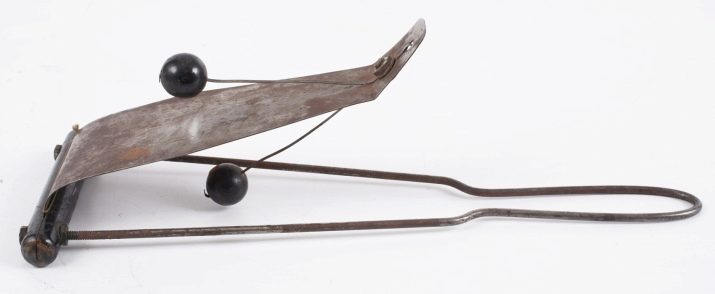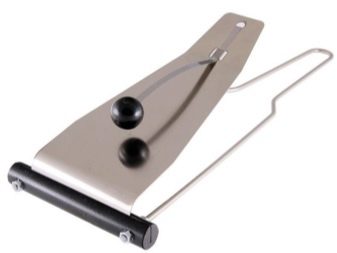All about flexaton

Musicians of all times and peoples tried in every possible way to diversify their favorite musical genre. Although flexaton is still a little-known musical instrument for the general public, this small design has been able to propel more than one musical direction forward. It's all about the unique sound of a percussion musical instrument.
About what secrets Flexaton keeps, what the name of this musical instrument means, how it influenced music in general, and a lot of interesting information, read the article.


What it is?
The emergence of such a percussion musical instrument as the flexaton falls on the 20s of the XX century. The instrument is a member of the family of self-sounding instruments. It is dominated by the pure sound of metal.
Flexaton can rightfully be called the "gray cardinal" in the world of music. This small percussion instrument is not very familiar to anyone, while it is quite often used in such musical genres as:
- jazz;
- classical music;
- pop music.

If at the first stages of its existence the instrument was widespread only in jazz, after which this "wave" was picked up by classical composers, now the sound of flexatone is used everywhere.
The instrument can often be heard in the movies. All this suggests that his sound is very peculiar and unique in its own way. It is impossible to convey in words, but in the works of composers it is easy. Here in these works you can hear the voice of Flexaton:
- Antigone by Arthur Honegger;
- "The Nose" and "Lady Macbeth of the Mtsensk District" by Dmitry Shostakovich;
- "Moses and Aaron" by Arnold Schoenberg;
- Erwin Schulhoff's First Symphony.



- Alfred Schnittke;
- Sofia Gubaidulina;
- Sergey Slonimsky and others.
All of the above suggests that the flexaton sound is really unique, which is why many creators and listeners fell in love with it.
The history of the name of this musical construction deserves special attention. There is no doubt that the root is the Latin word flexus. It has such a translation as "fold", "change in voice." Evidence that supports the theory is provided by the French word flexion and the Italian flessibilita (flexibility). These adjectives very accurately characterize the essence of the instrument, so it is not surprising that such a name stuck with flexaton.

Design
Flexaton means a self-sounding reed instrument, in which vibration occurs due to a steel plate. This plate is called a tongue and has a thin and curved shape that tapers at the “free” end. The length of the tongue, as a rule, does not exceed 18 cm, and the width is up to 6 cm.
The wide tip of the tongue grips a wooden block, which has a wire frame and handle on the other side. Two flexible metal rods are fixed on the narrow side. There is a ball at the end of each of them. It comes in two variations: wood and metal.
The pitch may change depending on how you press your finger on the tip of the reed. The sound itself due to vibration is somewhat reminiscent of the howling of the wind and has a tremolating character.
Other parameters such as the size and material of the balls do not affect the timbre and sound in general.


Technique of execution
For the sound of this musical instrument, it is very important to adhere to two basic rules. Then the sound will be clear and attractive. To play flexaton you need:
- hold the structure in your right hand by the handle;
- press on the free end of the tongue with your thumb.
A simple instruction allows you to put the instrument into action, after which it is shaken, and the balls, due to the impact, produce the desired sound. You can adjust the height by pressing with the same thumb. The sound will change from the bending angle of the plate. At first glance, this may seem like a simple task, but in reality everything is much more complicated. The fact is that the sound is rather difficult to regulate. This is why it takes only a few years of training to master the instrument perfectly. And yet virtuosos are able to change the timbre within 2 octaves. By itself, the flexatone timbre is more likely to have a ringing, even howling character, and in the upper register it is completely shrill.


And there is also an experimental way of playing flexaton. To do this, replace the classic version of balls that make a sound with a bow or sticks from a triangle, and so on. However, this approach is not very popular among musicians. As for the notes for flexaton, they are designated according to their sound. Within the orchestra, the part of this instrument is written under the tubular bells and above the triangle.
For how flexaton sounds, see the next video.








